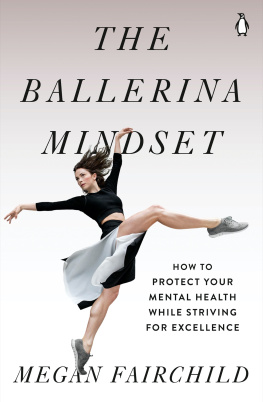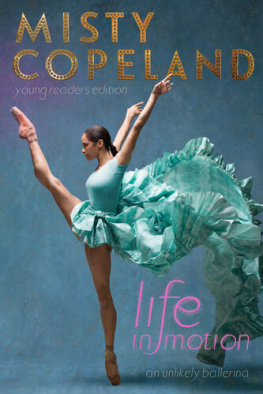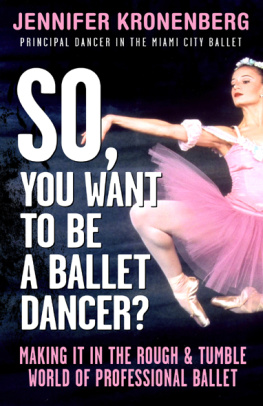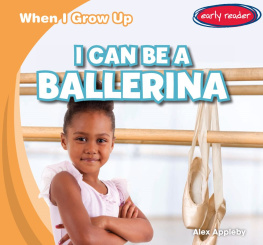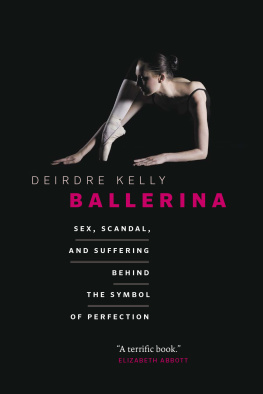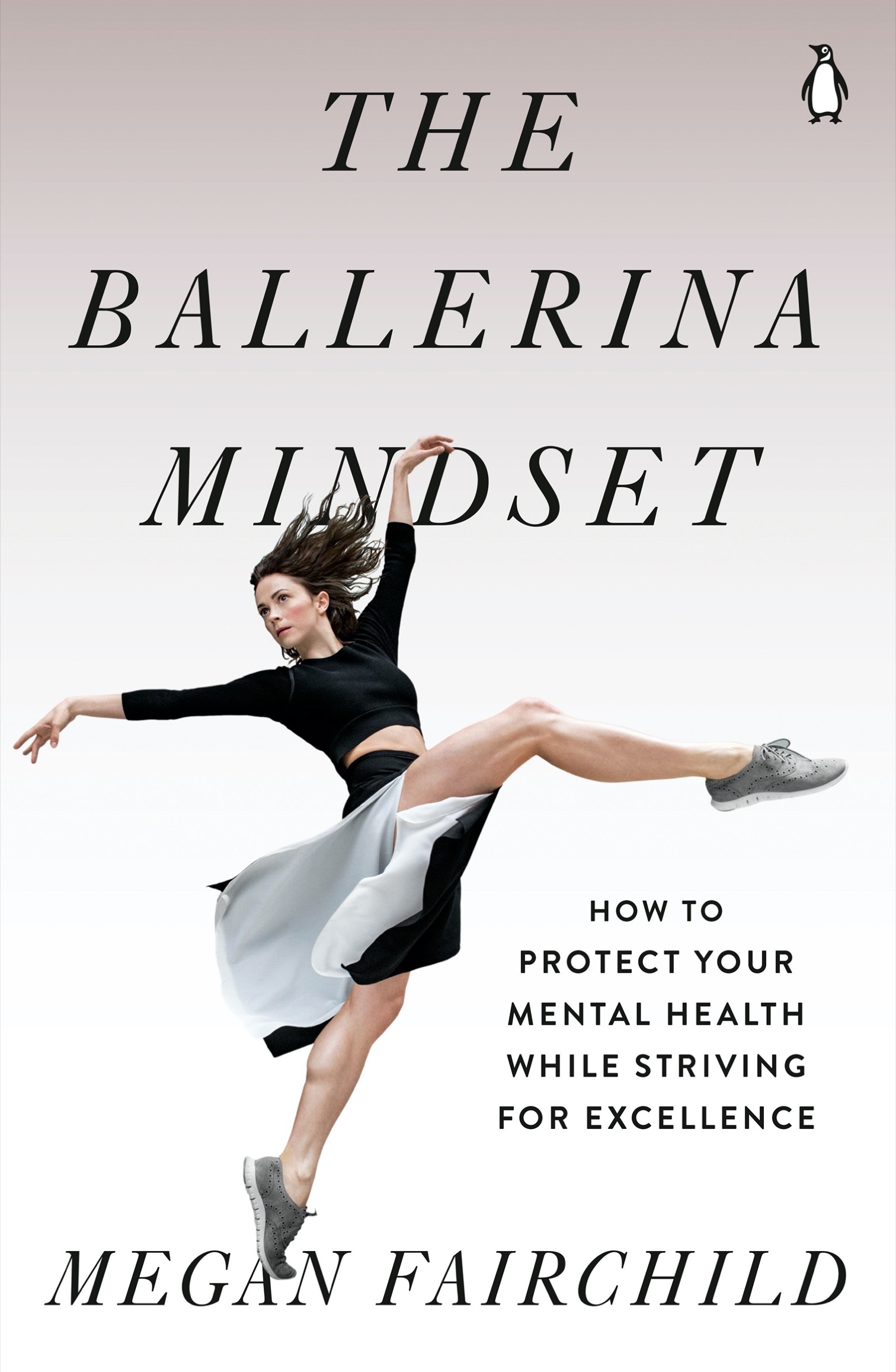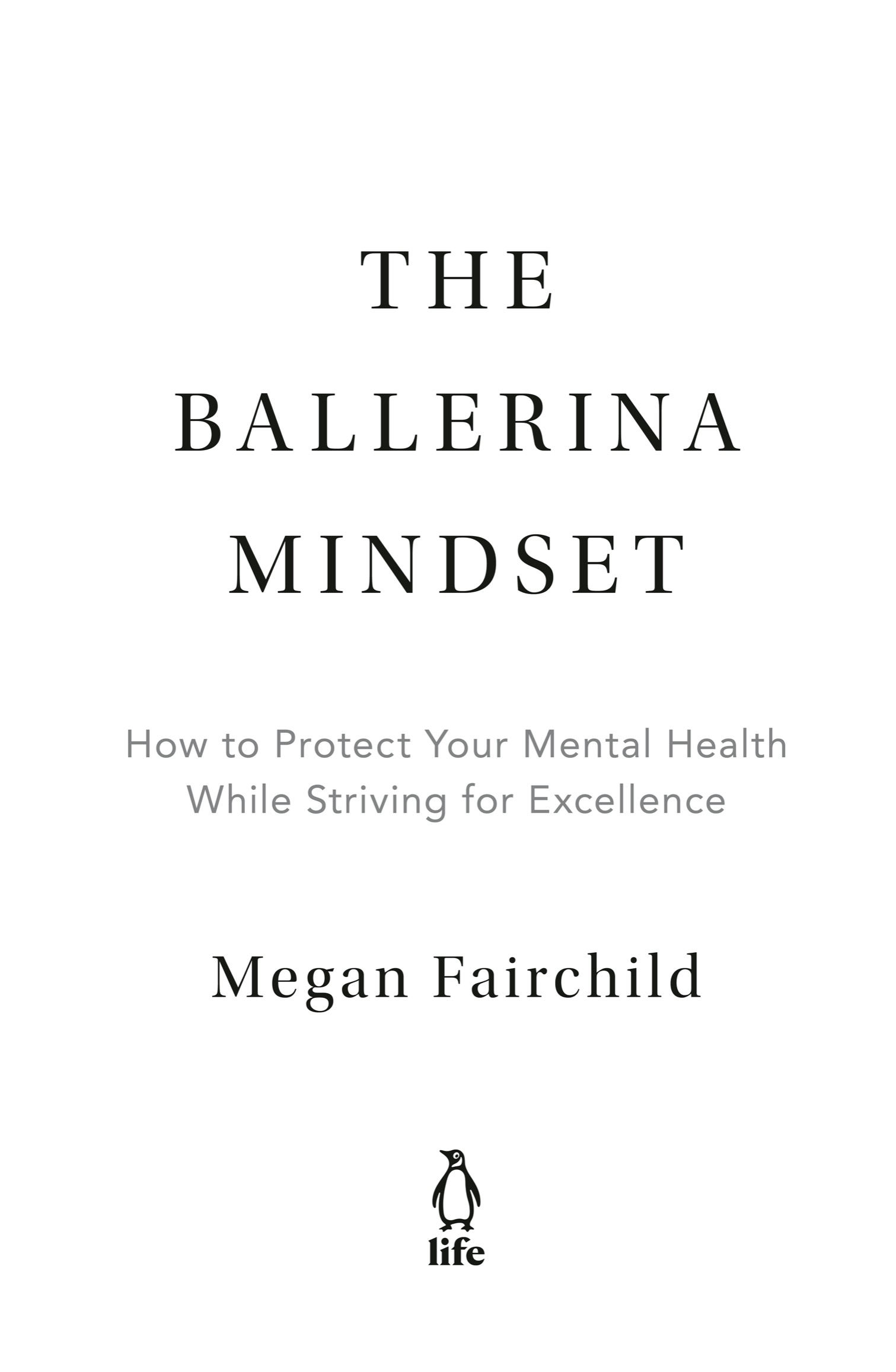penguin life
THE BALLERINA MINDSET
Megan Fairchild is a principal dancer with New York City Ballet. After moving from Utah to New York City at the age of sixteen to study ballet full time, she was offered an apprenticeship with NYCB and was promoted to principalthe highest rankjust three years after joining the company. In 2014, she took a temporary leave from NYCB to play the lead role, Miss Turnstiles, in the Broadway musical On the Town. She is also the host of the advice podcast Ask Megan, a former brand ambassador for Cole Haan, and an MBA student at NYUs Stern School of Business.
PENGUIN BOOKS
An imprint of Penguin Random House LLC
penguinrandomhouse.com
Copyright 2021 by Megan Fairchild
Penguin supports copyright. Copyright fuels creativity, encourages diverse voices, promotes free speech, and creates a vibrant culture. Thank you for buying an authorized edition of this book and for complying with copyright laws by not reproducing, scanning, or distributing any part of it in any form without permission. You are supporting writers and allowing Penguin to continue to publish books for every reader.
A Penguin Life Book
library of congress cataloging-in-publication data
Names: Fairchild, Megan, author.
Title: The ballerina mindset : how to protect your mental health while striving for excellence / Megan Fairchild.
Description: [New York] : Penguin Life, [2021] | Identifiers: LCCN 2021024500 (print) | LCCN 2021024501 (ebook) | ISBN 9780525507659 (ebook) | ISBN 9780143136040 (trade paperback)
Subjects: LCSH: Fairchild, Megan. | Self-actualization (Psychology) | Success. | Performance. | Stress management. | Work-life balance. | Life skills. | Ballet dancersUnited StatesBiography.
Classification: LCC BF637.S4 (ebook) | LCC BF637.S4 F346 2021 (print) | DDC 158.1dc23
LC record available at https://lccn.loc.gov/2021024500
Cover design: Julianna Lee
Cover photograph: Sebastian Kim / AUGUST
pid_prh_6.0_138671273_c0_r0
For my parents,
who gave me every opportunity to succeed
without any pressure
CONTENTS
INTRODUCTION
I started dancing at the age of four and have been deeply immersed in the world of classical ballet since the age of twelve. It is a glamorous, rigorous, and sometimes scandalous world that people like to dramatize in movies and books. In the seventies, ballet culture had an image of being full of sex and drugs, while today, it can sometimes be seen as incredibly sterile, disciplined, and overly intense. Its not for the faint of heart.
Within the industry, there is an immense amount of pressure on young students as they strive toward their dreams of becoming a professional dancer. I remember well how intimidating auditions or competitions can behow as soon as you arrive you begin to worry about whether you are measuring up to those around you. Young dancers are passionate, but they face a lot of anxiety.
I have spent the last seventeen years as a principal with New York City Ballet, and I can see that the ballet world is mysterious not only to the public but to ballet students, too. When I arrived as a seventeen-year-old apprentice, I was shocked to realize that the exceptional professionals around me were real people, not the perfect beings I had imagined them to be. They ate real food, laughed together, fell down, made mistakes, got back up, and put in the work. Watching people at the height of their artistry and athleticism lead real lives was a revelation for me. We all have doubts, we all have insecurities, and we all wonder if we are good enougheven those at the highest level.
I have always wanted to give back to my community by sharing the lessons I have learned throughout my unique career in a very small and insular field. Because dancers are so human, these are universal insights that can help anyone in any field that they hope to be spectacular in. And because it is through the lens of my time working to be an athlete, artist, and performer, the stories will also give a glimpse into a world often dramatized in the media. I hope to share what it is really like behind the scenes. The highs and lows of working to be your very best. Performing something after hours of hard work with only one or two shows to get it right for an audience of a couple thousand.
All of the lessons I have learned on the way apply to many different paths in life. How do we push ourselves to our limits while holding on to our sanity at the same time? How do we find the balance between striving toward perfection and accepting what we know is our best effort? How do we have full lives while still staying competitive and exceptional in our work? These are the questions that have consumed my mind during my career with NYCB. If youve ever wondered about the answers yourself, then this book is for you, whether you are a dancer, the parent of a dancer, a fan of the ballet, or even someone who has nothing to do with ballet at all.
In these pages I will write about ten crucial lessons Ive learned over the course of my career as a ballet dancer and explain how you can use these skills to find your strongest self amid all of lifes chaos, stress, and confusion. My hope is that my struggles, fears, and eventual takeaways will help not only younger dancers, but also others who work in completely different industries.
In the last three years, my life has been blessed with three beautiful daughters. I have always felt a responsibility to the young women who are hoping to become professional dancers someday. I want to model proper behavior and especially kindness within a competitive environment. But now Im also writing this for my own children, in the hopes that they can achieve their dreams with a sense of well-roundedness and balance as well.
FACING ANXIETY

How can we deal with anxiety and stage fright?
In the movie Black Swan, the main character, Ninaa young, inexperienced dancer hoping to find success in a big ballet companysuddenly gets cast in the lead role of the companys upcoming production of Swan Lake. The movies portrayal of the moment Nina finds out she has been cast in the role is so accurate, it could have been a scene out of a day in the life of a real ballet company. The casting is announced by a paper posted on the companys bulletin board, and every dancer in the movie strains their neck to see what their part in the production will be. The range of reactions runs the gamut from frustration to contentment to pure exuberance. When Nina sees that shes been cast to dance the coveted lead role of the Swan Queen, her first response isnt one of pure excitement and celebration. Instead, in a state of shock, she goes into a bathroom stall to cry. What she thought she wanted, or secretly hoped for deep down, is now terrifying as she thinks about the pressure and responsibilitynot only of dancing the lead without much prior experience, but also of doing it while other dancers breathe down her neck with jealousy. When I saw the movie, this scene resonated with me so much, because it mirrored the fear and dread I felt when I was given my first opportunities as a professional dancer.
In November of 2001, at the age of seventeen, I was offered an apprenticeship with New York City Ballet. Ever since our School of American Ballet workshop performance the previous June, my classmates and I had been in the dark about whether the company was interested in hiring us. Waiting for that first job offer is a strange time for a dancer. In fact, I almost took a position with San Francisco Ballet that summer instead. But I made one last effort to come back to SAB and try my luck at NYCBand fortunately, it worked out. When the director of NYCB, Peter Martins, finally called me and nine of my friends into the office at SAB, I was beyond thrilled... and relieved!

